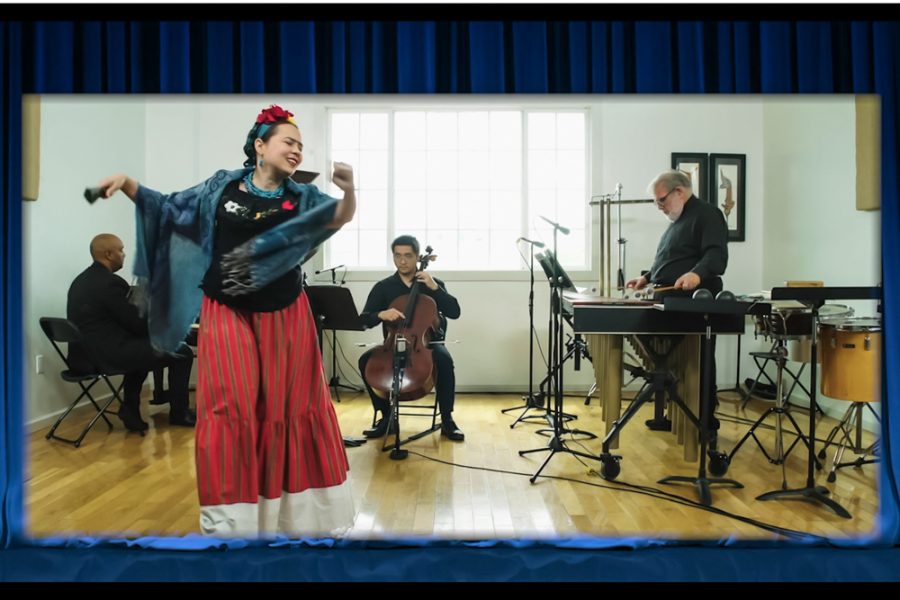GVSU explores Latin American history and culture in “Tres Vidas”
Nov 8, 2021
Latin American music and culture are explored in “Tres Vidas: A Chamber Music Theater Work Conceived and Performed by “The Core Ensemble”‘ as the stories of three important women in history are told. The Grand Valley State University Department of Music Theater and Dance made this pre-recorded performance available to the GVSU community at 7 p.m. on Wednesday, Nov. 3.
This performance comes from a music group in Florida called The Core Ensemble. Members include cellist Ju Young Lee, percussionist Michael Parola and pianist Mikael Darmanie. The acting and singing for all characters in the recording are done by one woman, Rosa Rodriguez.
Music History Professor Lisa Feurzeig was responsible for bringing the Department of Music, Theater and Dance’s attention to this opportunity. She had received information about “Tres Vidas” in her email and the provided clips piqued her interest. She didn’t even need to see the full performance to understand that this would be a beneficial opportunity for students to experience.
“Cross-cultural knowledge and understanding are really important in our very integrated world so the more that we can know about things that happen in Central America, the better,” Feurzeig said.
As a professor of world music, Feurzeig is very in tune with the importance of broadening students’ understanding of different cultures.
I think we should be more familiar with our neighbors to the south,” Feurzeig said. “Latin America is really important and we should know more things about it.”
“Tres Vidas” translates to “three lives” and details the stories of painter Frida Kahlo, activist Rufina Amaya and poet Alfonsina Stormi.
“The stories themselves are really powerful because they each go through some very big challenges and they in some way triumph over a lot of hardship,” Feurzeig said.
Mexican painter Frida Kahlo was born in 1907 and is especially known for her portraits and self-portraits. Tres Vida outlines her career and relationship with painter Diego Rivera.
The story of the sole survivor of the El Mozote massacre is another aspect of “Tres Vidas.” Rufina Amaya was born in 1941 in El Salvador and happened to experience horrific events which led her to activism.
The third woman whose story is included in “Tres Vidas” is Alfonsina Stormi. Born in 1892, Stormi was Argentina’s first great feminist poet.
“I think learning about these people and learning about the times and places and historical circumstances they lived in are all benefits (of this performance),” Feurzeig said.
In addition to the ensemble, Rodriguez performs a one-woman show. She changes personas from Kahlo to Amaya to Stormi.
This performance was pre-recorded by The Core Ensemble and was made available to the GVSU community for multiple days. If people tuned in during the 7 p.m. event, they were given the opportunity to participate in a Q&A with a couple of the performers. Questions were able to be asked directly to the artists, or through the chatbox on zoom.
Along with the storylines of these women, Feurzeig said she found one of the most interesting parts about this performance was the technical aspect of it. The recording has an interesting approach to transitions and integrating the acting and singing into the work of the ensemble.
























